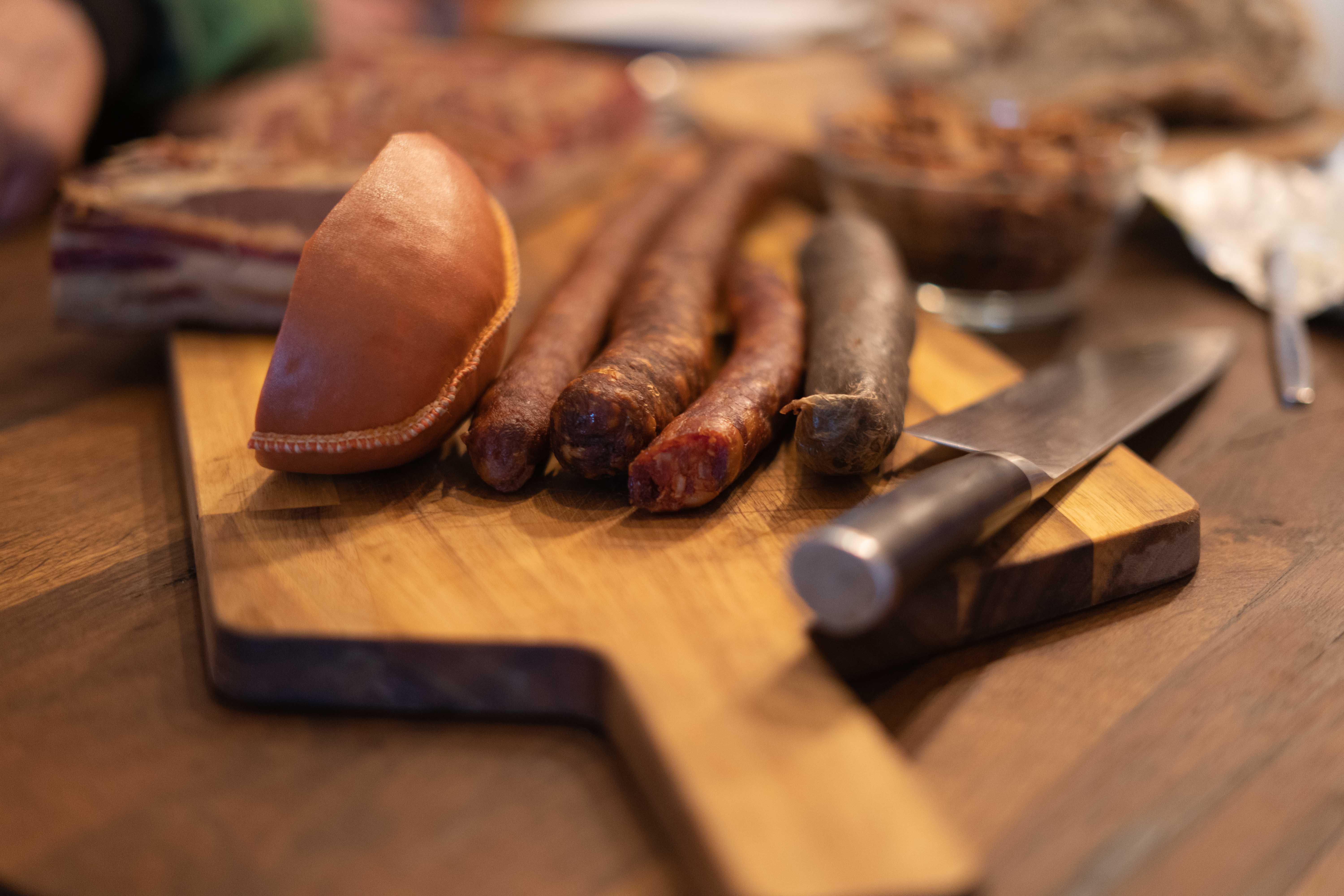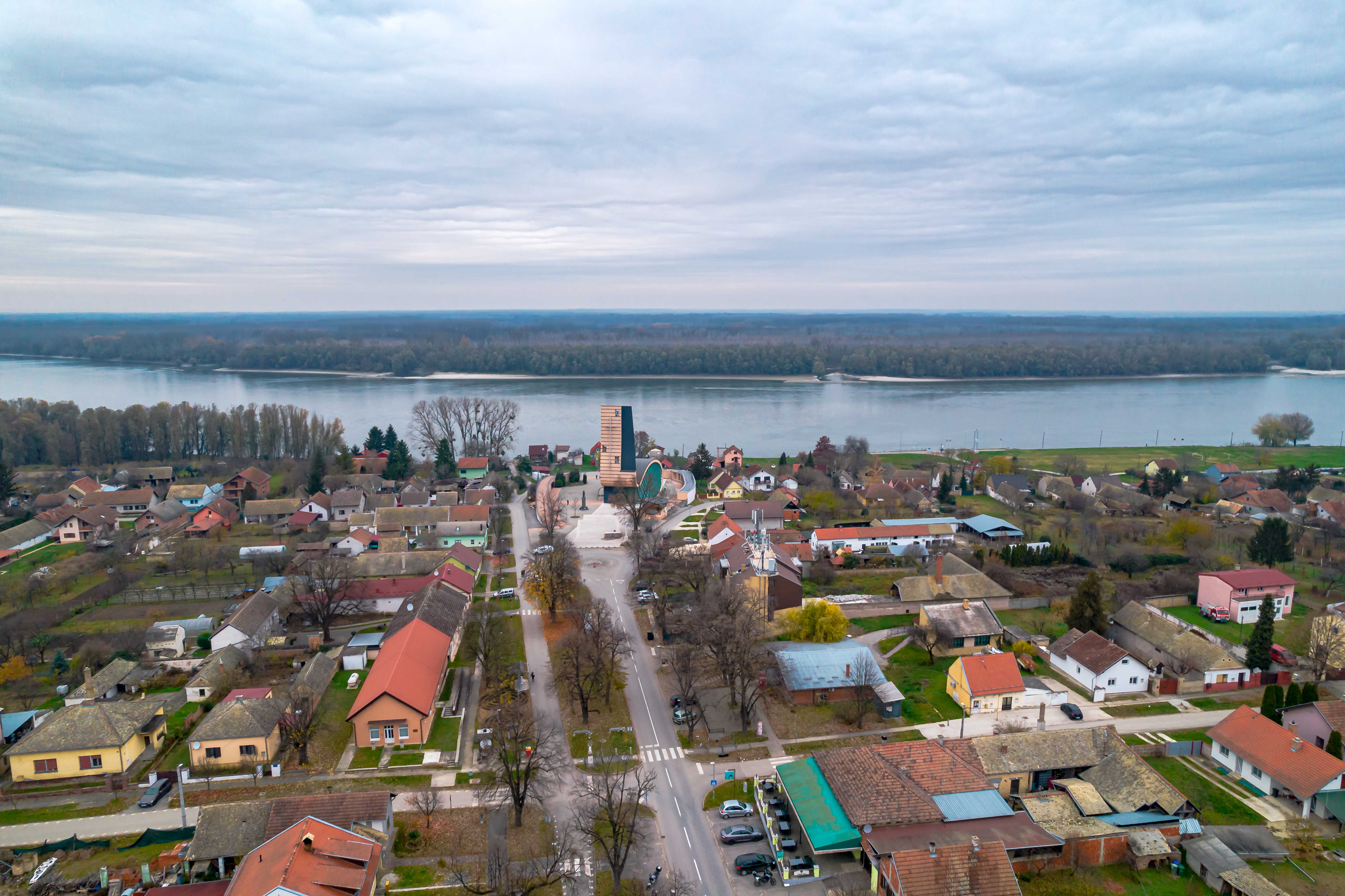Museum of Becarac in Pleternica: All You Need to Know About Slavonia
March 24, 2023 - A new pearl of tradition has been formed right in the heart of Slavonia - the Museum of Becarac Interpretation centre offers an entirely new impression of this region.
Can Slavonia compete with Dalmatia and Istria, the generators of tourism in Croatia? The answer is simple - no. And it doesn't need to. Croatia, as a very colourful country, geographically, climatically, and in terms of food and gastronomy offer, cannot have competition between its regions but rather have them complement each other for the complete tourist offer of the country.
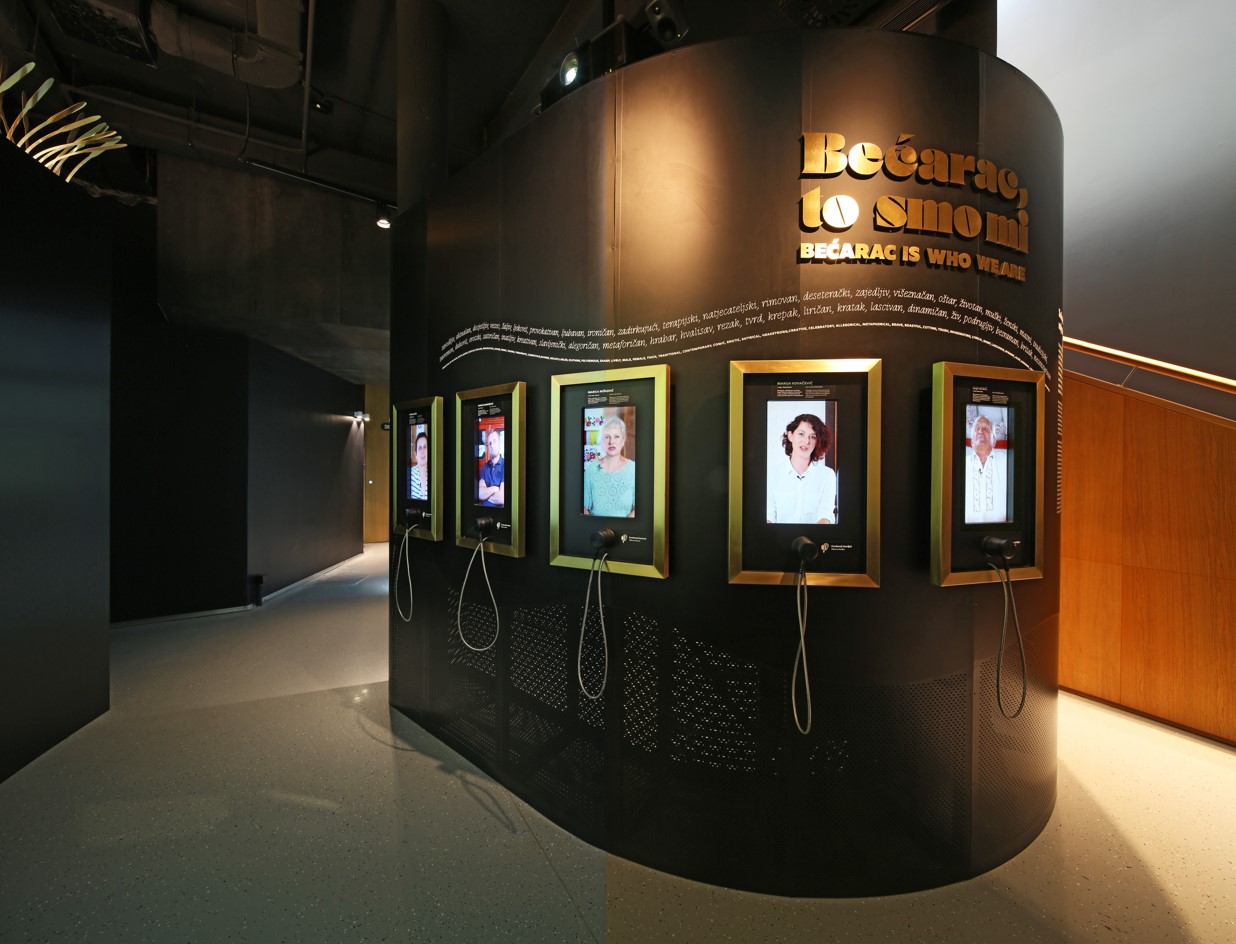
At the first mention of Slavonia and tourism, many people wave their hands because they see Slavonia as a region of agriculture, but those who know a little better, even those who have scratched the surface of what Slavonia has to offer, see how things are changing. And not spontaneously and in an unplanned manner, but strategically. Traditional manifestations are being strengthened, the regio's presence at tourism fairs is increasing, and awareness is being raised about its wine and gastro offer. However, one of the key things is the infrastructure, various centres offering all kinds of content, which are being built and renovated in Slavonia.
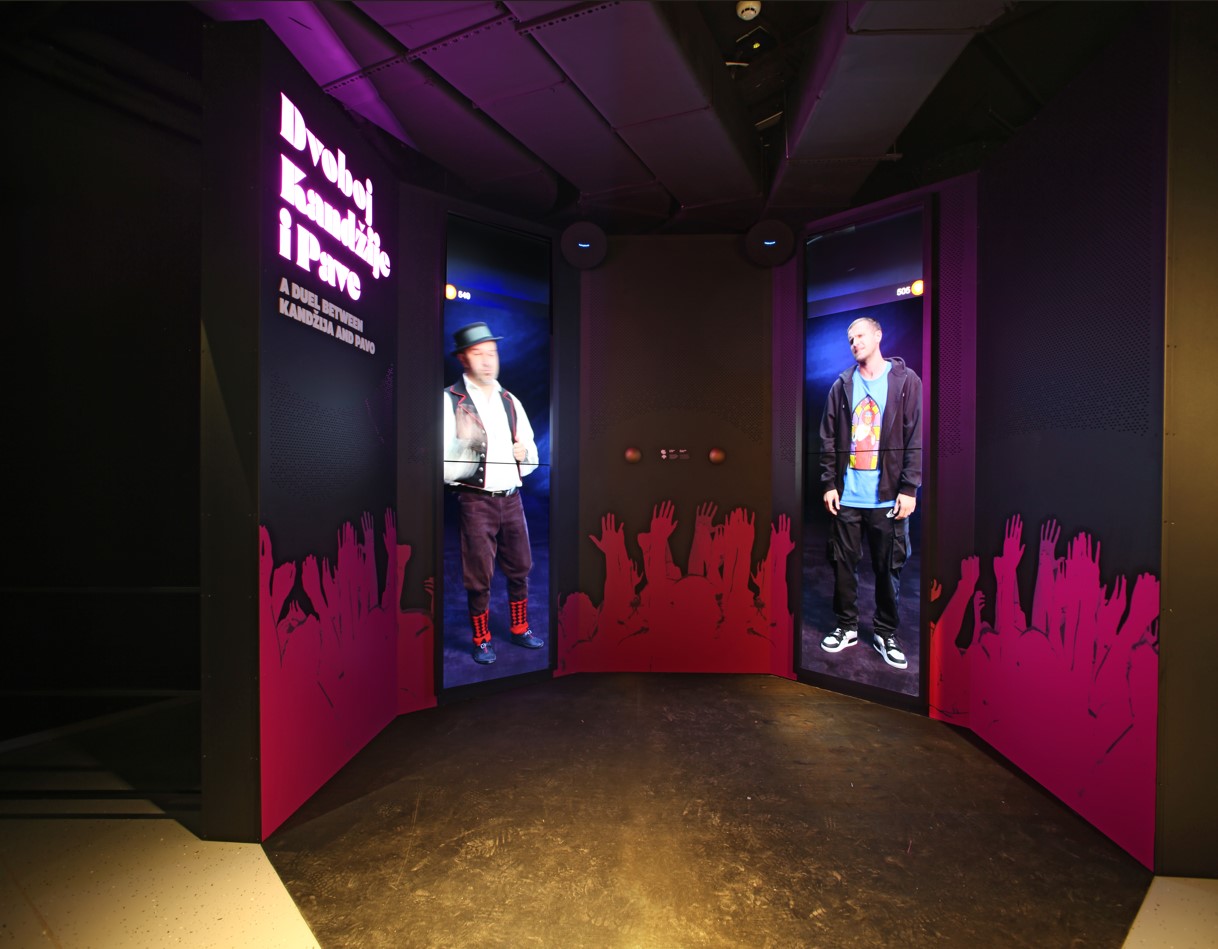
One of such centres, perhaps the pearl of Slavonia, is the recently opened Museum of Becarac in Pleternica. It is one of the few infrastructure projects specifically built to become a museum. The design was the vision of a famous Croatian architect Andrija Rusan, who also designed the arrangement of the central part of the city for Pleternica.
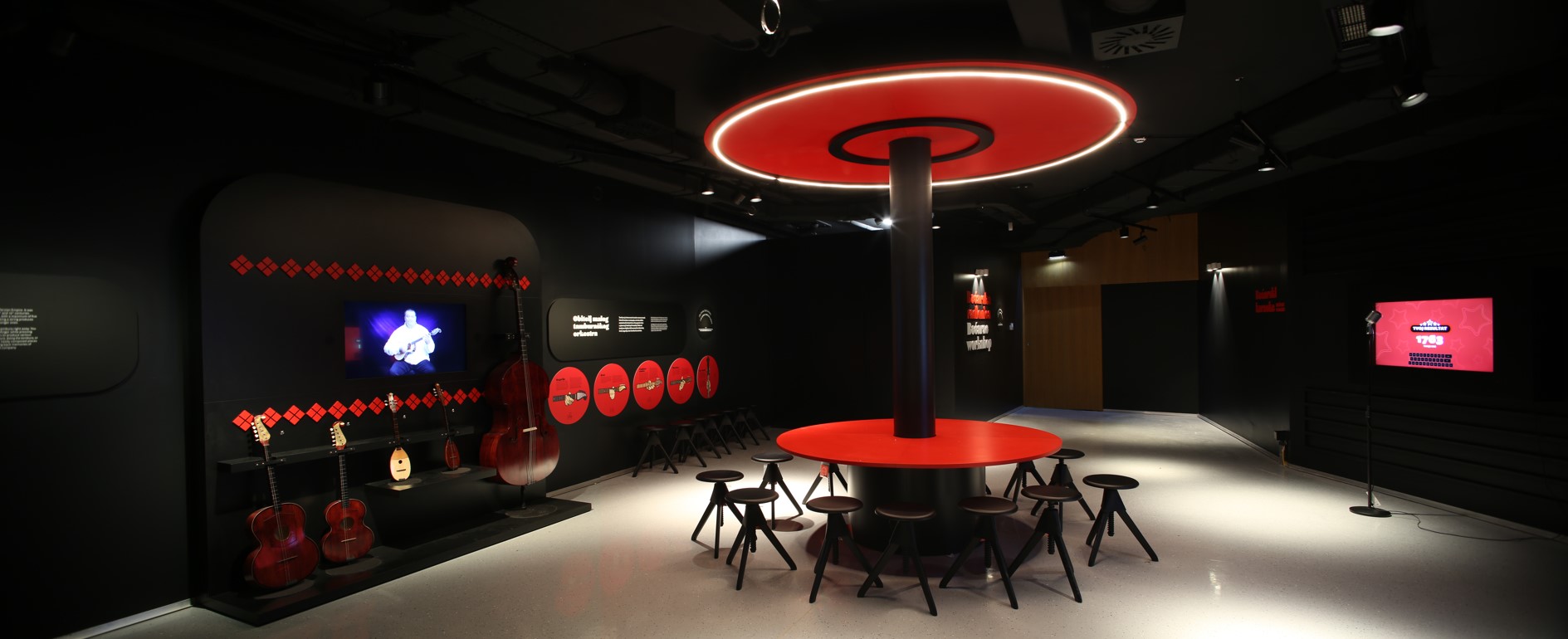
The strategic work we mentioned is best manifested in the interpretation of the centre, created by the Zagreb company Muze, in whose realisation over a thousand proud representatives of the Slavonian tradition from Slavonia, Baranja and Srijem participated. Also, in the attitude of the city leadership and the museum, the focus is on a broad view of tourism in the region. So if you ask the mayor of Pleternica, Marija Saric, how she sees the museum, she will say that it is the starting point of a tourist visit, part of the mosaic of the rich offer of the whole of Slavonia, Baranja, and Srijem.
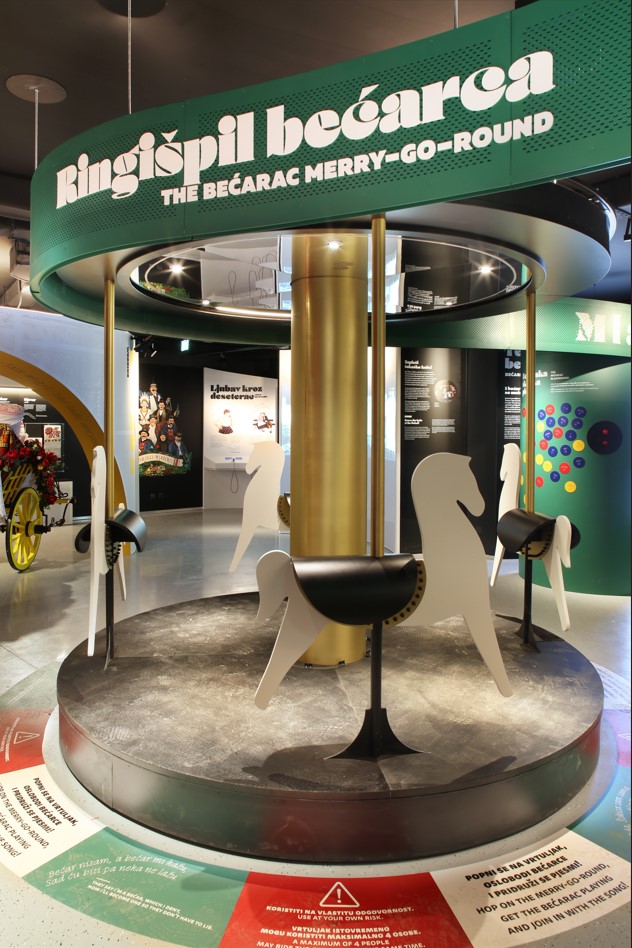
Part of Croatian cultural heritage, becarac is known as a form of humorous folk song that originates from Slavonia. It usually involves male singers dropping lascivious lines in front of a tipsy audience that roars from laughter at every rhyme – it's clever, sassy, and always a bit inappropriate. In 2011, bećarac was officially inscribed in UNESCO's Intangible Cultural Heritage list.
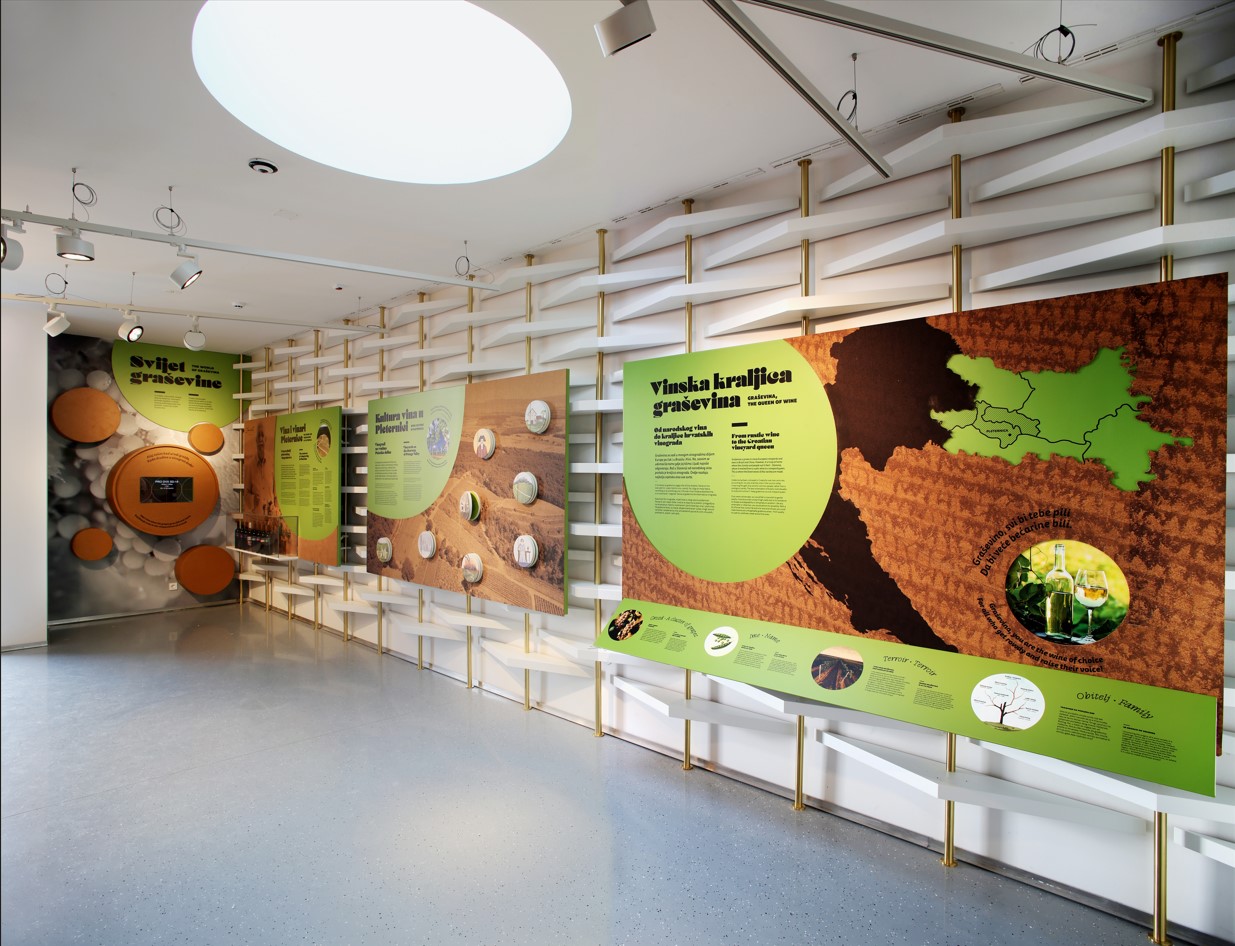
But what does that starting point offer? Everything you need to know about Slavonia on your first visit told, or rather sung in the form of becarac. The first exhibition is the only one you can see when you peek through the museum doors. It is called Mala kuća graševine (The little house of Graševina wine). It presents the rich wine history of Pleternica, the town itself, basic information, and a few interesting songs that will surely delight you. Of course, the theme of this exhibition is wine. Going down the stairs, a completely new world opens up, the world of becarac, and upon arrival, it is impossible to hide the smile on your face and the radiance caused by the song, the joy, the beauty of the folk costumes.
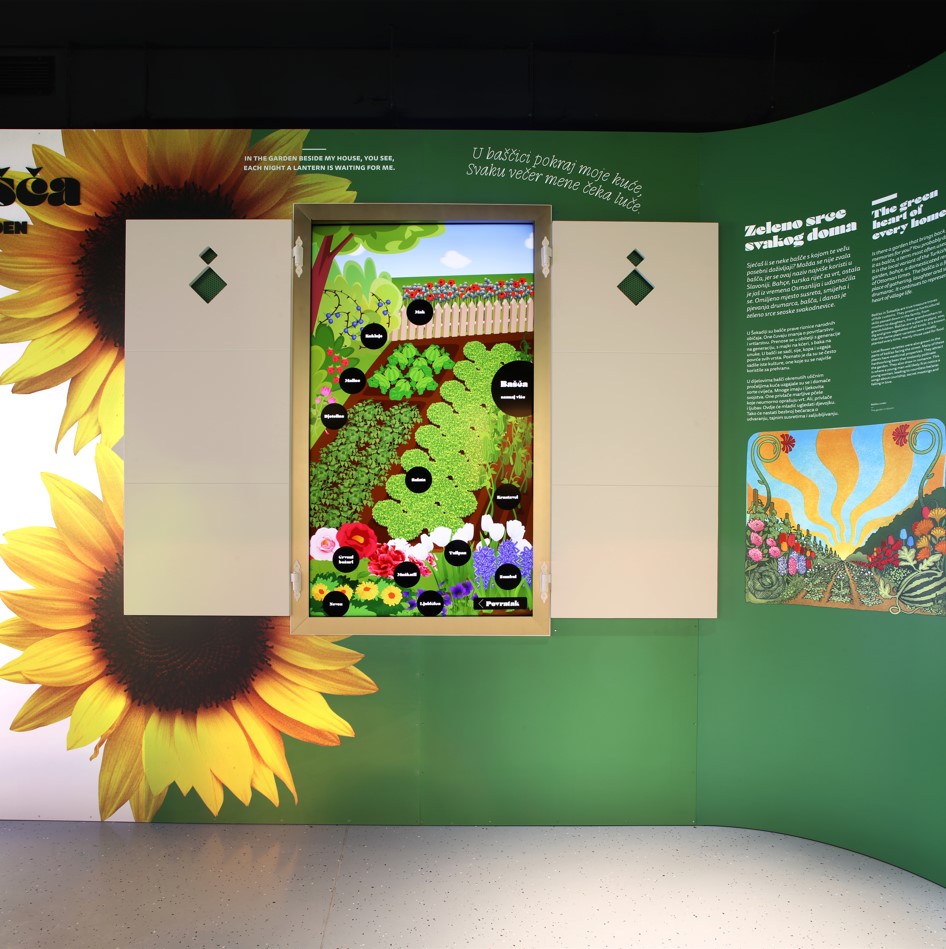
The lower and main part of the Museum consists of several exhibitions, of course, "Introduction to the world of becarac," followed by "Becarac through life," "Becarac calendar," and finally, "The becarac rhapsody." It would take a while to describe each of these, but what is interesting and hidden in the Museum is that it is not just about the song, but rather the whole life of a region is presented through becarac, down to the last detail.
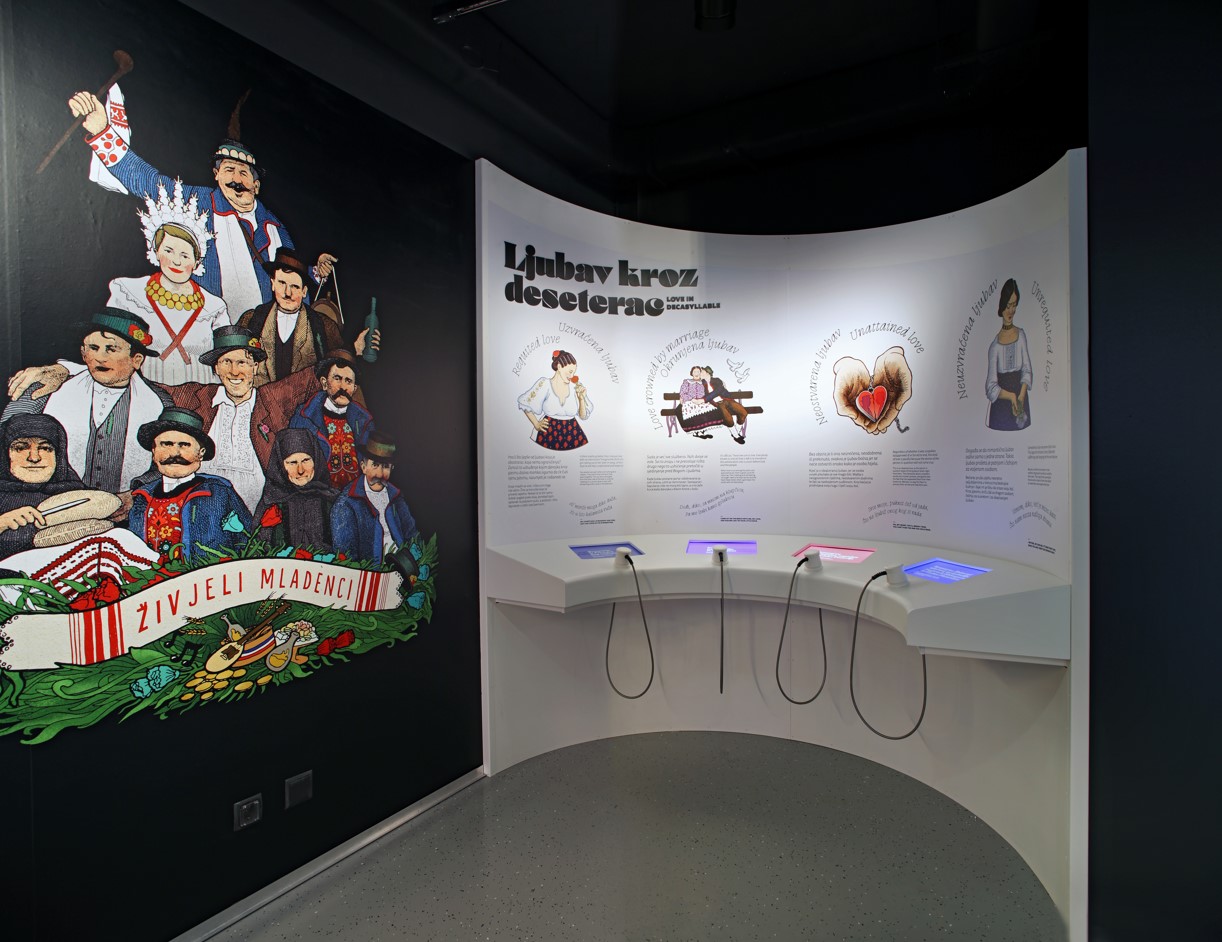
Multimedia exhibits guide you through the Museum, which you don't even realise since they are skillfully interpolated with the traditional museum setting, i.e., exhibits and artistic representations of specific segments. The Museum of Becarac in Pleternica is without a doubt a must-visit point not only for continental but also for national tourism. If we add to that the Terra Panonica Interpretation Centre, which also tells the ancient story of the Pannonian Sea, and is located right next to the Museum, maybe a train ride through the Pleternica vineyards, we can just conclude that you should leave time for Pleternica - everything else is waiting for you there.
For more, make sure to check out our dedicated Travel section.
Sunflower Award: Slavonia and Baranja for Your Ultimate, Authentic Croatian Holiday
March 3, 2023 - The Adriatic is undeniably beautiful; Istria is a fragrant, colourful heaven on Earth, but trust us, and head on east to Slavonia and Baranja for the Croatian holiday you didn't know you needed. The food, the wine, the rivers and forests, the cycling and adventuring, the tradition and culture - it's got it all. And that is recognised in various ways, most recently in the form of the Sunflower Award of the Croatian Association for Tourism and Rural Development of the "Selo" Members Club.
As SiB writes, the awards ceremony was dominated by winners from the Osijek-Baranja county. For example, the Municipality of Kneževi Vinogradi won the Grand Golden Sunflower championship title as the best Croatian wine destination.
"This truly honorable award is the result of many years of joint work of winemakers and winegrowers from our area, associations that organise events, and the support provided by the Municipality of Kneževi Vinogradi. This is an incentive for us to continue working on the quality of our wine destination, which is recognised not only by the profession but also by an increasing number of visitors," said the head of the Municipality of Kneževi Vinogradi, Vedran Kramarić.
Steve Tsentserensky
In addition to the championship title of the Great Golden Sunflower of the Municipality of Kneževi Vinogradi, there were five other winners from Osijek-Baranja County. The Tourist Board of Osijek-Baranja County received the gold award in the category of rural tourism projects for the wine tourism development project Land of Wine. The gold award in the category of traditional (rural) gastronomy was awarded to the restaurant Čingi Lingi Čarda in Bilje. With good reason, the gold award in the category of rural tourism projects was awarded to the Presentation and Education Centre Tikveš in Kopački Rit. The gold award in the category of projects/holders of protected and marketing trademarks was awarded to the House of the Baranja Kulen in Beli Manastir, while the bronze award in the category of traditional (modern) households went to Villa Edl Elegant in Aljmaš.
Aljmaš - Steve Tsentserensky
The Sunflower Awards for rural tourism in Croatia is a project that once a year evaluates and presents traditional content, preserves authenticity, and connects participants in rural tourism. It is awarded in eight categories.
"I am proud that from the very beginnings and creation of rural tourism in our country, I have been supporting and advising people who are just starting in this segment of tourism," said the president of the Croatian Association for Tourism and Rural Development of the "Selo" Members Club, Dijana Katica, who has been organising the largest and most significant event in rural tourism for the last ten years.
In recent years, Osijek-Baranja county has seen continuous growth in the number of visitors and overnight stays, thus becoming one of the most attractive continental destinations. Through the HeadOnEast project, which brands the County as a tourist destination, and the event of the same name, which last year became the most significant event in Osijek-Baranja County due to the number of visitors, additional preconditions have been created for an even stronger development of the tourist offer. This is supported by this year's prestigious title of the global travel platform Booking.com, which declared Osijek-Baranja County the most welcoming region.
"The friendliness and hospitality of the Osijek-Baranja County will also be shown at the next Sunflower rural tourism award ceremony, which we will host in our county at the end of this year. It will be an opportunity to show all our tourist potential, natural beauties, rivers, the Kopački Rit nature park, castles, endless vineyards, and a rich local wine and gastronomic offer," said prefect Ivan Anušić.
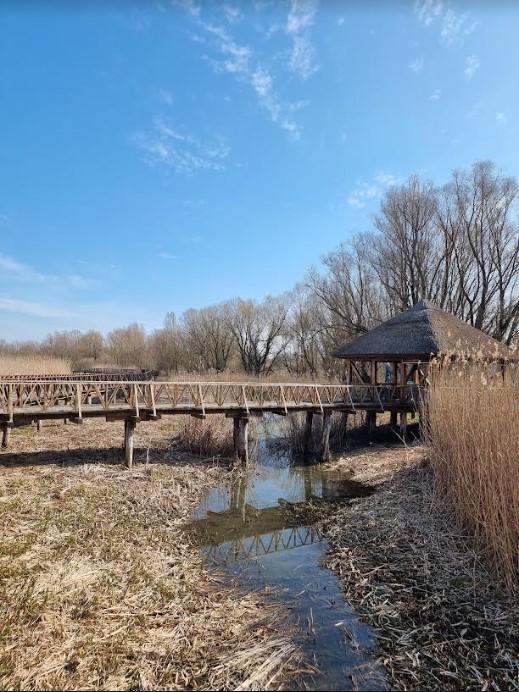
Kopački Rit Nature Park
The Vukovar-Srijem County received several awards as well.
Adrenaline park Bosut Rokovci-Andrijaševc won the gold award in the category of active tourist facilities in rural areas. It is a precious reward for dedicated work and development of outdoor activities, but also teamwork to solidify Andrijaševci and the Vukovar-Srijem County as a top destination of Croatian continental tourism, writes Vinkulja.hr.
The silver award in the category of traditional (rural) households went to the Šokačka Lady Holiday House in Županja, while another silver award in the category rural tourism projects went to Županja for the event Šokačko Sijelo. The bronze award in the category of rural tourism projects was awarded to Stanarski Susreti event of the Association "Šokadija Babina Greda".

Steve Tsentserensky
"We are also extremely proud of the winners from the area of Vukovar-Srijem County and send our most sincere congratulations to all winners in all categories. Special thanks to Mrs. Dijana Katica for years of work in recognising, motivating, educating, and promoting all stakeholders in the development of rural tourism in Croatia. Let's continue to be loyal to all the tourist values of Croatia and persistent in their development for the permanent benefit of our valuable citizens and our irresistibly beautiful and immeasurably rich homeland", said Majda Jakša, director of the Tourist Board of Vukovar-Srijem County.
For more, make sure to check out our dedicated Travel section.
Museum of Becarac, Pleternica, Celebrates Slavonia Folk Song
November 7, 2020 – Protected by UNESCO, the unmistakable Slavonian folk song style will get deserved attention at the new Museum of Becarac in Pleternica.
There are lots of pretty little towns in Slavonia like Pleternica. The average outsider often has no way of distinguishing between them. But, Pleternica is determined to stand out. In a smart and considered move, they've decided to become synonymous with a UNESCO-protected element of Slavonian and Croatian culture - Bećarac.
Last year, Bećarac Square was opened in Pleternica. Soon, the town will become home to another symbol of heritage preservation – the Museum of Becarac. The Museum of Becarac will be located right next to Bećarac Square in the center of the town.
Bećarac is a traditional and humorous type of folk song originally from Slavonia. It has an unmistakable sound. It is characterised by a rhyming, call-and-response type of delivery and is performed acapella or accompanied by the traditional Slavonian folk music style of tamburitza. The melody of Bećaraci remains constant, only the song words differ as it continues or is again performed. In this way, Bećarac is more akin to the traditional storytelling aspect of folk music than it is an individual song.
The first verse is sung by the choir leader and forms a logical thesis; it is repeated by the choir of gathered men. The second verse is a humorous antithesis, also repeated by the choir (but often broken by laughter). Bećarci is usually performed at the peak of a party as a drinking song after the crowd is sufficiently warmed up by wine and music. A series of bećarci can last indefinitely. Their words are often made up spontaneously. The creator of the lines of lyrics can draw on many different sources of inspiration - recent happenings, local stories, reputations, past songs and much more. The style is embraced by almost every band who you will ever hear play tamburitza music - young, old, traditional, or modern. Thus, the subject matter and language used can vary greatly, as does the appeal of the humour and the lyrics. If a writer creates a popular motif, it can be remembered, repeated and even replied to at later instances. It may travel outside of its source of origin in the same way traditional folk music always has.
Bećarac was declared an intangible part of cultural heritage by UNESCO in 2011. The name bećarac comes from the word bećar, meaning reveller, and the word is often used to describe young Slavonian bachelors.
Museum of Becarac to present Slavonian heritage in a modern way
As Požeški vodič reports, the Museum of Becarac project was presented at the beginning of 2020. The 1400 square meters that the Museum of Becarac will occupy has already been designated during the construction of Bećarac Square.
Below the stands of the square, it is planned to house a souvenir shop and a cafe. The Museum of Becarac itself will be built on two floors. The first is already visible when you walk through the passage under the stands. The larger part of the museum will be located underground, in the basement space. The museum is expected to open at the end of 2021.
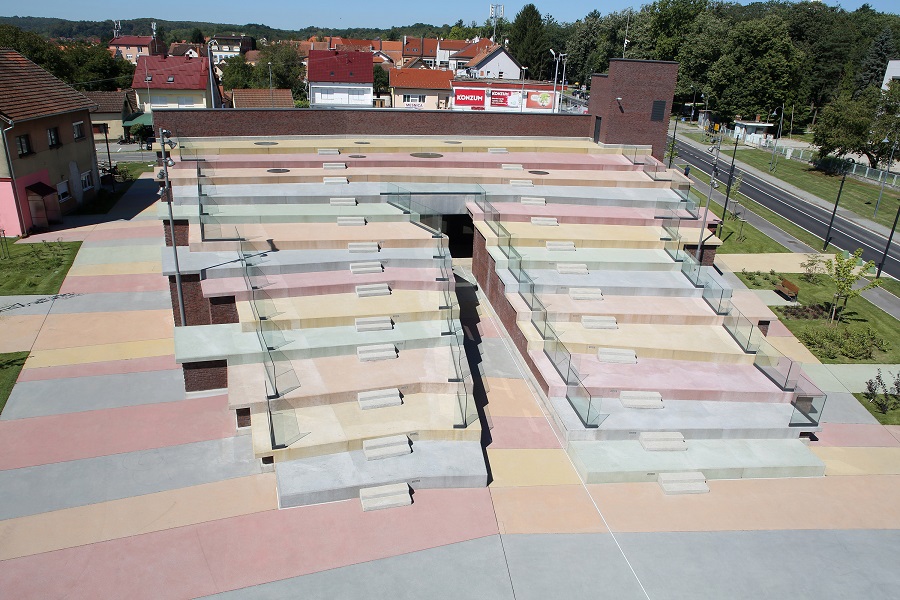
Bećarac Square in the center of Pleternica, under whose stands the Museum of Bećarac will be located, is designed as a reminiscence of golden Slavonian fields and sunny hills / D. Fabijanić, The City of Pleternica
"The Museum of Bećarac will be a presentation of heritage with all modern techniques: music, video, and visual recordings, and at some point, you will even have the feeling that you are running through wheat fields," said Antonija Jozić, the Mayor of Pleternica.
Apart from Slavonia, the Croatian regions of Baranja and Srijem are also home to bećarac, and it belongs to them equally. Furthermore, it is also performed in parts of southern Hungary and Vojvodina. It is a part of traditional culture throughout much of the Pannonian Basin. Like its UNESCO protection, its continued performances seek to preserve a special Slavonian tradition. This dedicated museum will also contribute to doing just that.
"Folk costumes and other objects will be exhibited in the museum, too, because it is very important, but we will use other methods to contextualize these objects. First of all, this is not a museum of folk costumes, but a museum of folk song bećarac. And it is performed. So we have to figure out how bećarac will be in focus all the time, but then we will, of course, talk about other anthropological, ethnographic, and historical phenomena related to bećarac," explained Dragana Lucija Ratković Aydemir, founder and director of Muza company which participated in the presentation of the museum project on January 13, 2020.
The Museum of Bećarac is part of a large project called "Svijet graševine" (The world of graševina), which is being carried out by the City of Pakrac, with the City of Pleternica as one of the partners. Out of the total 65.7 million kuna of the project, 30 million kuna is intended for the Museum of Bećarac, while the rest is intended for the City of Pakrac's "Spahijski podrum" project and branding.
The rich city cultural treasury
The Museum of Bećarac is designed as an extension of the tourist offer of the small Slavonian town. Pleternica has about 11,000 inhabitants, but every year, one event attracts as many as 100,000 pilgrims there. It is the Novena of Our Lady of Tears, whose sanctuary is located in the heart of Pleternica and for which the city of Pleternica is otherwise known. It is held every year from 23 to 31 August.
The June Days of Amateur Creativity called LIDAS are also important for Pleternica, during which the splendor of the cultural treasury of this region is presented. The children's tamburitza festival "Cvjetići glazbe" (Flowers of Music) is held on those days and is the only one of its kind in Croatia. Due to the parish church of Sv. Nicholas, who is the patron saint of the city, Pleternica City Day is celebrated each year on December 6th.
Pleternica has been looking for a "trigger" for a long time to help them attract even more tourists, and they finally recognized it in bećarac.
"Many years ago, at the suggestion of one of my fellow citizens, we protected the name of the Museum of Bećarac at the Intellectual Property Office because we felt that it could be a good story that would bring tourists to Pleternica. As European funds were available to us, we developed the project and, now we are in the phase of completing equipping the museum. I believe that from the end of next year we will be able to count the tourists who will come to Pleternica," the mayor Jozić told Večernji list.
An interpretation center rather than a museum
The museum currently produces all video and audio materials, applications, art installations, and procures all exhibits, and to consistently convey the spirit of Slavonian tradition to visitors, preparations by museologists, experts, and ethnologists are indispensable.
"The museum we are working on is not a classic museum, it is more of an interpretation center, that is, a visitor center. We will show all tourists who come what bećarac is and what Slavonian life is. And then, of course, when they visit the museum, we hope that they will visit all our other beauties, from wine roads and cellars to family farms," says Antonija Jozić.
Pleternica Town to Get World's First Bećarac Square
Pleternica, a town in the region of Slavonia, is about to get the world's first Bećarac square


